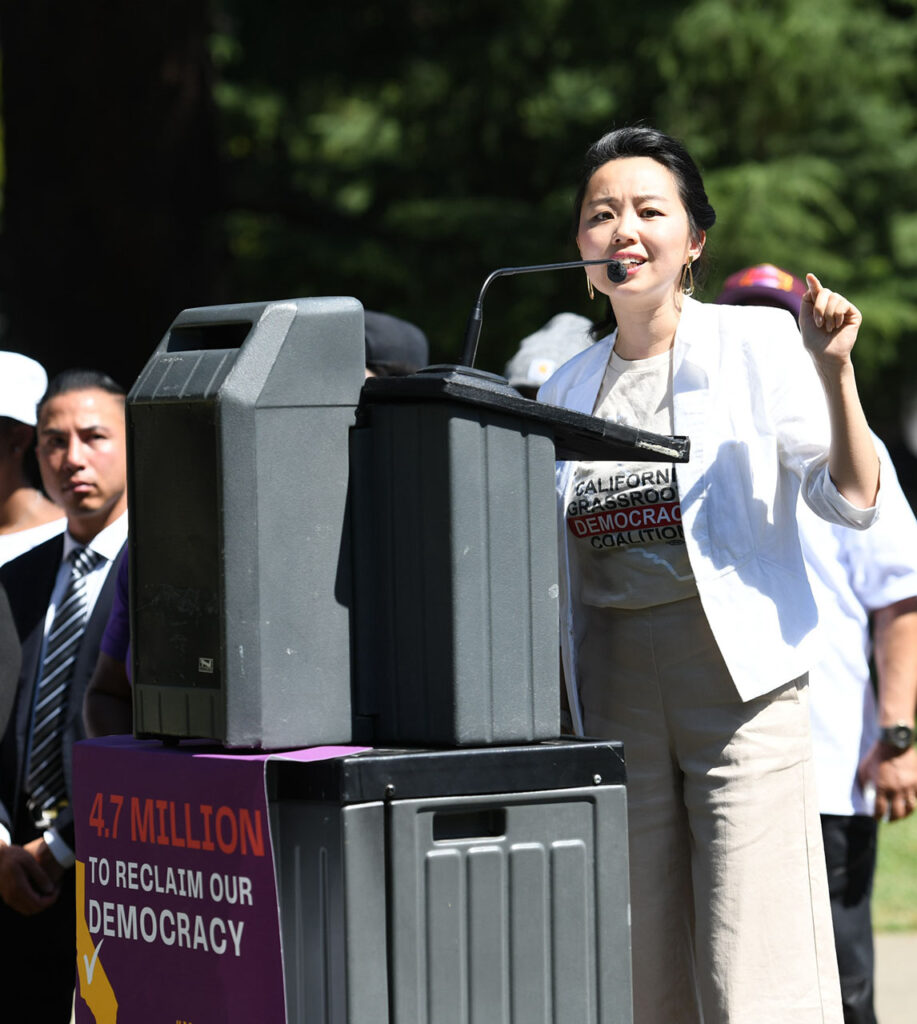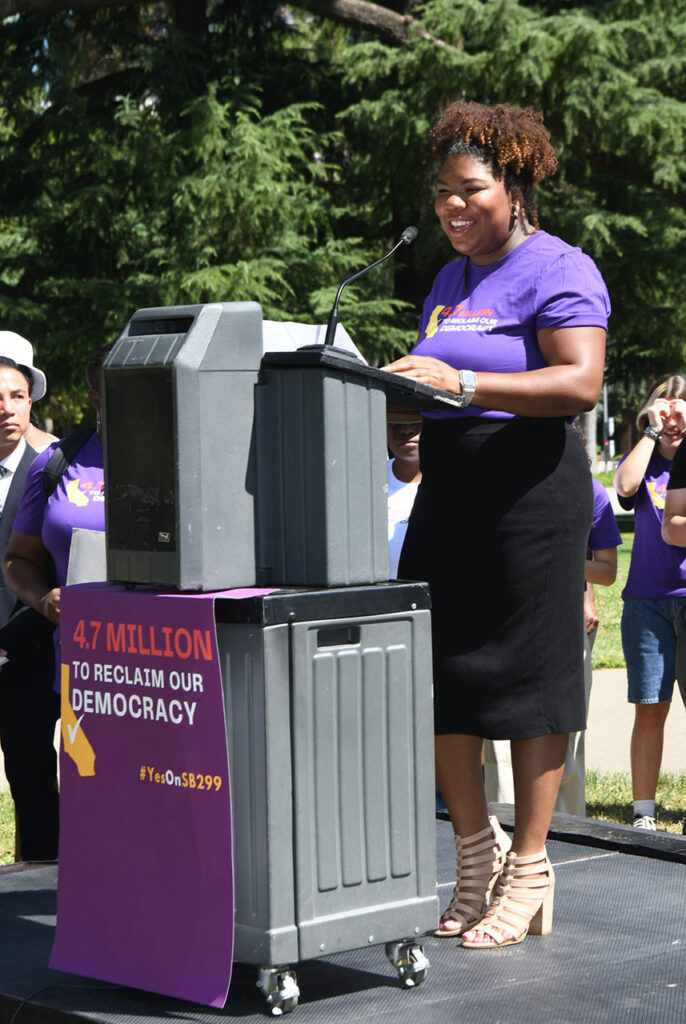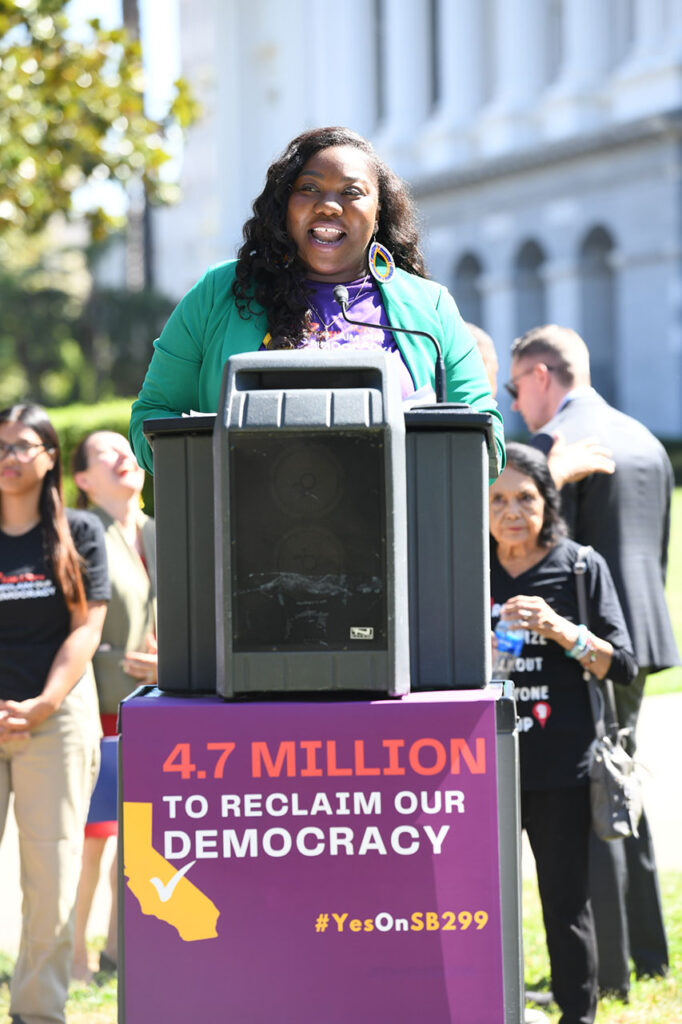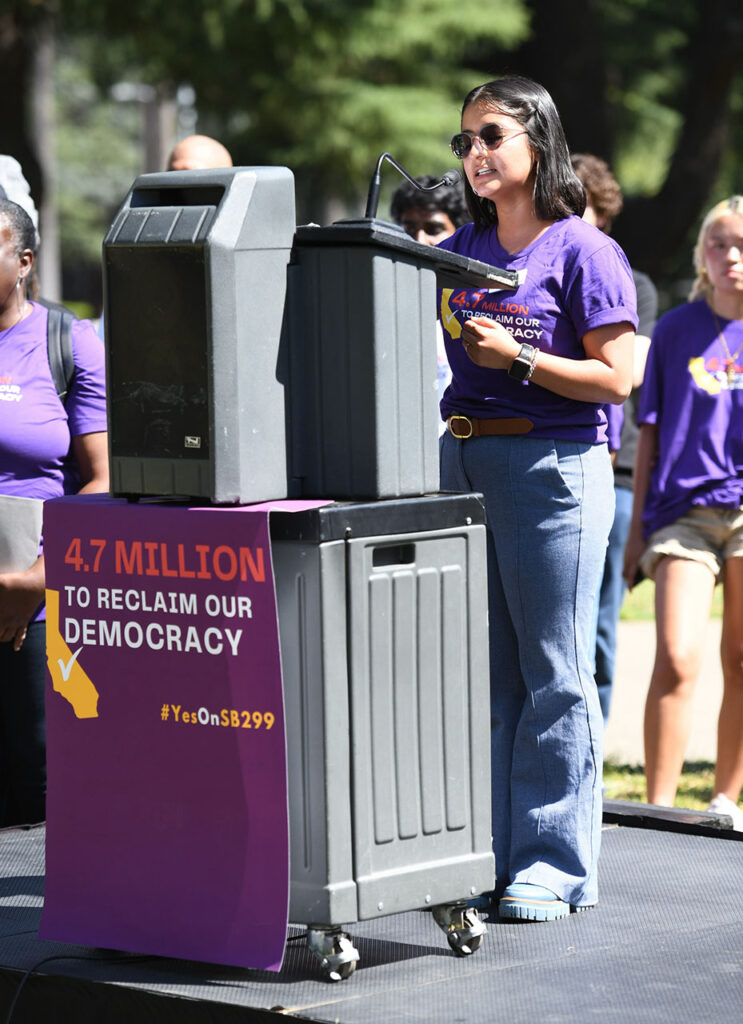An inmate at the Los Angeles County Sheriff’s Department Men’s Central Jail. (File photo by Hans Gutknecht, File Photo)
In recent weeks, proponents of Proposition 36 have drastically shifted their messaging. Initially, they claimed crime, including retail theft, was out of control and something they needed to urgently address. But with report after report debunking their claims, they have abandoned their original “tough on crime” message for a more sympathetic message of a “mass treatment” approach.
As a disability and human rights advocate, I am very concerned that the solutions proposed by Proposition 36 would only worsen the problems in communities. People with disabilities—especially people of color—are overrepresented in our prison system, with more than 40% of those in state prisons having a disability, compared to just 15% of the general population. As someone in recovery and a former drug dealer, I know firsthand how policies like those proposed by Proposition 36 could worsen the drug addiction crisis, which is a form of disability.
The reality is that Proposition 36 does nothing to address drug treatment in any kind of a “mass” way. In a last ditch effort to save their flailing proposition, proponents of proposition 36 are misleading the public and ignoring basic facts about the urgent gaps we have in our drug treatment system.
Supporters of Proposition 36, including politicians like San Jose Mayor Mahan, argue that drug addiction is the root cause of retail theft, overdose deaths, and homelessness in California. And now they are trying to convince the public that Proposition 36 offers tools needed to help people get into treatment for retail theft and homelessness that were taken away by Proposition 47. The backers of Proposition 36 euphemistically refer to this program as a “treatment mandated felony.”
But Proposition 36 does not provide any new funding for drug treatment. The Legislative Analyst’s Office’s official analysis found that Proposition 36 would actually cut funding for mental health and drug treatment programs by millions. Even the proponents of this measure have conceded Proposition 36 lacks proper funding and have attempted to tie it to unrelated funding sources, a strategy that simply doesn’t make sense.
Their messaging becomes all the more frustrating and unacceptable as the state of drug treatment in California only gets worse. Access to quality drug rehabilitation has become increasingly difficult, with residential treatment durations reduced from 3-9 months to just 1-3 months. There are limited housing options following rehabilitation, such as housing accommodations for mothers and their children, forcing difficult decisions upon completion of treatment. Governor Newsom vetoed legislation to legalize safe injection sites, one of the only real solutions to preventing overdose deaths. Proposition 36 does nothing to address these important issues in the fight against drug addiction.
Proponents of Proposition 36 are proposing the same old approaches that have already failed. They argue that by adding drug mandated treatment back into the fold, people will get treatment. But that is not a novel idea or intervention. Drug mandated treatment exists today. As much as we wish otherwise, mandating drug treatment for individuals convicted of a drug-related offense is not effective in reducing drug use. Continuing with this approach will only make things worse.
Despite the shift in narrative, Proposition 36 is still a tough on crime measure. Proposition 36 will do nothing to address the geopolitical fentanyl supply crisis and instead goes after users who are selling drugs to support their addiction. Decades of research has shown going after low level dealers and users does nothing but put people at risk of overdose. Disrupting supply lines in a community with no sufficient services leaves people who use drugs with no other option than to turn to riskier suppliers, worsening the overdose crisis.
Reversing Proposition 47, as Proposition 36 proposes, will likely actually worsen houselessness, an outcome that is, while hard to imagine, very possible. Proposition 36 will put more people in prison, only increasing their likelihood of becoming unhoused upon release because a criminal record prevents people from accessing housing, income, and the stability needed to survive in an increasingly unlivable state. Not only will it exacerbate houselessness, but evidence shows drug use is not the root cause of homelessness. The number one reason Californians end up homeless is a loss of income, not drug use.
Related Articles
- Commentary |Enough is enough: Orange County’s taxpayers deserve accountability and transparency
- Commentary |Senate Bill 900 is a bonanza for insurance companies and a blow to housing affordability
- Commentary |Gov. Newsom’s emergency hemp rules could block life-saving therapies
- Commentary |Vote No on Proposition 2: Let’s not go deeper in debt for a broken system
- Commentary |Gov. Newsom must reject AB 2527 and end solitary confinement for pregnant women
Real treatment does not exist at the end of the legal process under Proposition 36. Death is a likely outcome for those who do not survive prison. Putting people with drug addiction in prison will only force them into torturous withdrawals and overdoses. After going through excruciating pain, people will be released back to the streets, which is the most dangerous time for overdose risk. Proposition 36 will lead to higher levels of drug addiction and overdoses.
To truly address this crisis, I believe we need improved and expanded housing, safe injection sites, increased detox capacity, and longer stays in treatment facilities as needed. We need restorative justice initiatives that focus on family reunification in rehabilitation programs, investment in reentry processes, and paid entrepreneurial programs. This is what “mass treatment” looks like, not the empty messages of Prop 36, which will not actualize these interventions but rather put people into the costly cycle of imprisonment and poverty.
Vanessa Ramos is an advisor at Disability Rights California
















